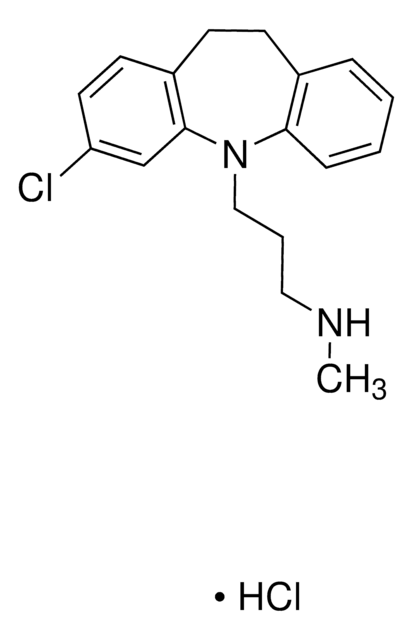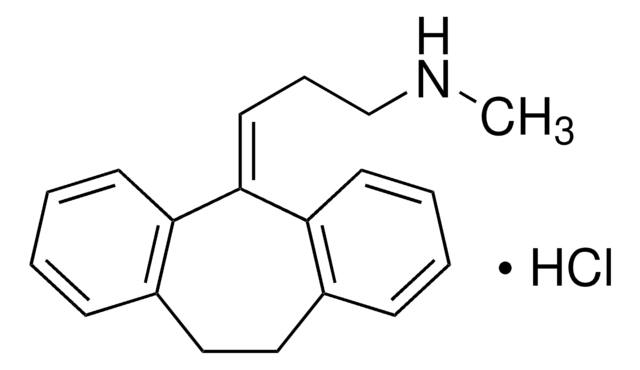P1386
Acide propionique
≥99.5%
Synonyme(s) :
Acide en C3, Acide propanoïque, Acide propanyl
About This Item
Produits recommandés
Densité de vapeur
2.55 (vs air)
Niveau de qualité
Pression de vapeur
2.4 mmHg ( 20 °C)
Essai
≥99.5%
Température d'inflammation spontanée
955 °F
Limite d'explosivité
12.1 %
Impuretés
≤0.25% water (Karl Fischer)
Couleur
≤10, APHA:
Indice de réfraction
n20/D 1.386 (lit.)
pb
141 °C (lit.)
Pf
−24-−23 °C (lit.)
Densité
0.993 g/mL at 25 °C (lit.)
Chaîne SMILES
CCC(O)=O
InChI
1S/C3H6O2/c1-2-3(4)5/h2H2,1H3,(H,4,5)
Clé InChI
XBDQKXXYIPTUBI-UHFFFAOYSA-N
Vous recherchez des produits similaires ? Visite Guide de comparaison des produits
Description générale
Application
- Distribution Characteristics of Low-Molecular-Weight Organic Acids in Reclaimed Soil Filled with Fly Ash: A Study.: This research investigates the presence and distribution of propionic acid among other organic acids in reclaimed soils treated with fly ash. The study provides insights into the environmental impact and potential remediation strategies for soils contaminated with industrial by-products (Zheng et al., 2024).
- Effects of Black Soldier Fly (Hermetia illucens L., BSF) Larvae Addition on In Vitro Fermentation Parameters of Goat Diets.: This study examines how the addition of black soldier fly larvae affects the fermentation process of goat diets, including the production of propionic acid. The findings suggest potential benefits for improving animal nutrition and gut health (Lu et al., 2024).
- NMR Spectroscopy in Diagnosis and Monitoring of Methylmalonic and Propionic Acidemias.: This review highlights the use of NMR spectroscopy to diagnose and monitor methylmalonic and propionic acidemias, providing a non-invasive method for tracking these metabolic disorders. The study underscores the clinical significance of propionic acid in metabolic research (Deleanu & Nicolescu, 2024).
- The New Buffer Salt-Protected Sodium Butyrate Promotes Growth Performance by Improving Intestinal Histomorphology, Barrier Function, Antioxidative Capacity, and Microbiota Community of Broilers.: This study explores how propionic acid, along with sodium butyrate, improves the growth performance and gut health of broilers. The research demonstrates the beneficial effects of these acids on poultry farming (Melaku et al., 2024).
- Prevotella enterotype associates with diets supporting acidic faecal pH and production of propionic acid by microbiota.: This study links the presence of the Prevotella enterotype in the gut microbiota to diets that promote the production of propionic acid, emphasizing the role of diet in modulating gut health and metabolic functions (Adamberg & Adamberg, 2024).
Mention d'avertissement
Danger
Mentions de danger
Conseils de prudence
Classification des risques
Eye Dam. 1 - Flam. Liq. 3 - Skin Corr. 1B - STOT SE 3
Organes cibles
Respiratory system
Code de la classe de stockage
3 - Flammable liquids
Classe de danger pour l'eau (WGK)
WGK 1
Point d'éclair (°F)
129.2 °F - closed cup
Point d'éclair (°C)
54 °C - closed cup
Faites votre choix parmi les versions les plus récentes :
Déjà en possession de ce produit ?
Retrouvez la documentation relative aux produits que vous avez récemment achetés dans la Bibliothèque de documents.
Les clients ont également consulté
Notre équipe de scientifiques dispose d'une expérience dans tous les secteurs de la recherche, notamment en sciences de la vie, science des matériaux, synthèse chimique, chromatographie, analyse et dans de nombreux autres domaines..
Contacter notre Service technique











